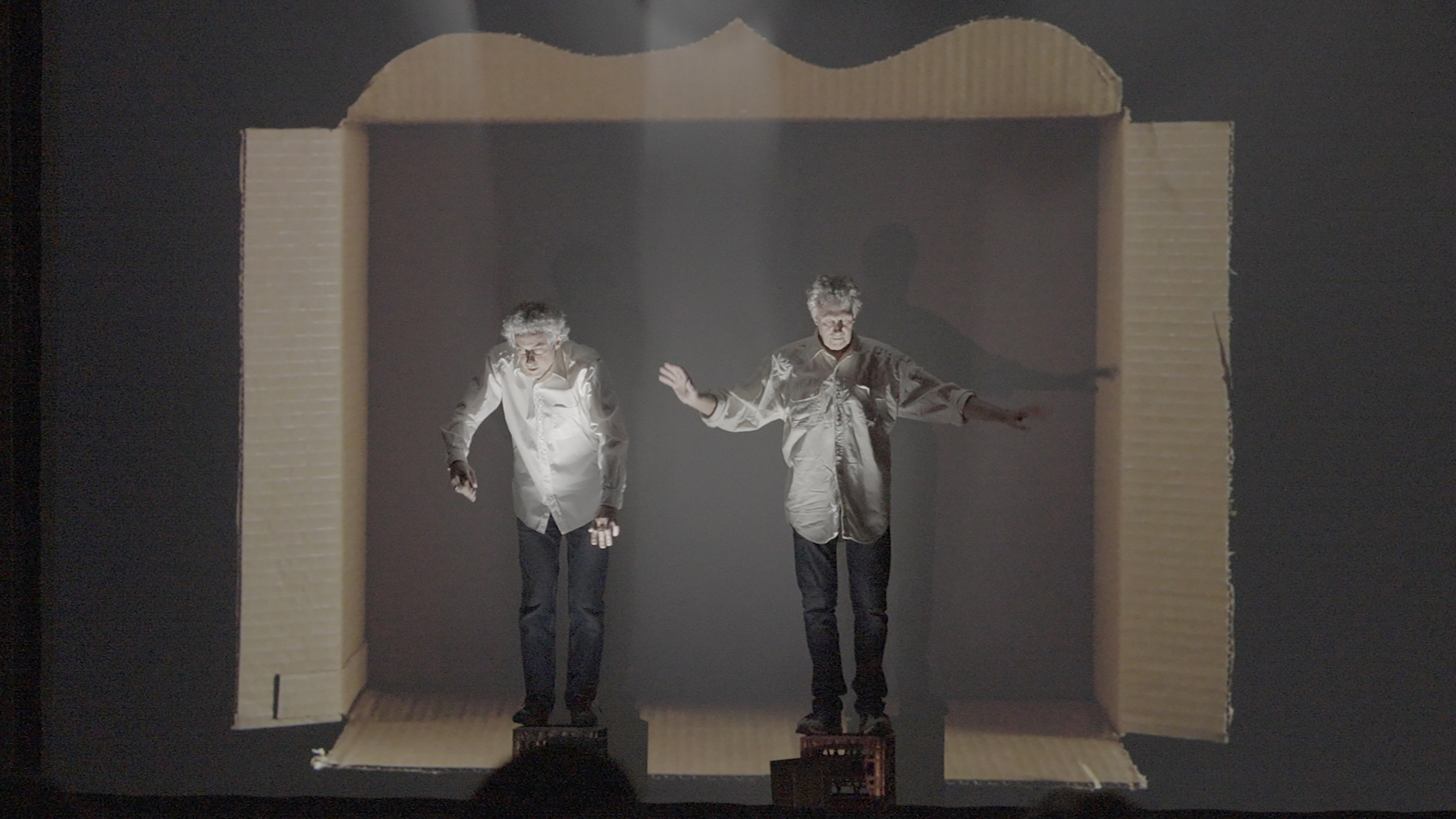This is a short excerpt from an hour-long performance piece.
In the video we slip out of Shakespeare’s play “King Lear,” develop a new twist on the characters and their motivations, then rejoin the dark drama before it reaches its grisly conclusion. We don’t see the short-sighted king forcing his daughters into a competition of love, nor the malice they heap on him as a result. And we don’t see the bloody ending where, unsurprisingly, everyone dies! Instead we are presenting a particular analytical enquiry into the psychic makeup and enduring consequences that stem from these circumstances.
The program weaves together several themes regarding parenting, social hierarchy and death.
The initial impetus and irreverent decision to set our own agenda within a moment in King Lear stems from the unending stream of interpretations that dominate English theatre and film, and the struggles with the archaic language and historically distant references and humour.
We temporarily exit the play in Act 3, Scene 2, where Lear and his companions are caught in a storm on the barren heath, as the king is slipping deeper into madness. From here we are able to develop a vocabulary of verbal and visual metaphors that probe the contrast between Lear’s self-indulgent and miserable journey, and that of his daughters and their self-reflecting musings on his and their familial dysfunction.
Unlike Lear, the women are able to exist outside of the play and engage in a psychological reading from the perspective of actors playing roles born of a male writer’s imagination. They can subsequently re-dramatize these roles separate from Shakespeare’s narrative.
Thanks to Anne Noble, Cynthia Wekesa, Jacintha Braithwaite, Jon Radojkovic, Stefan Till, Jim Grant, Basha Mayo, Dylan Pust, Heather Saumer, Doug Tielli, William Bossi, Grace Bridgman, Pam Hopwood, May Tettero, Ilse Gassinger, Dave Dunn, Michael Jackson, Jane Dover, the Municipality of West Grey and the Ontario Arts Council.
